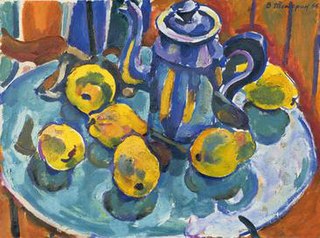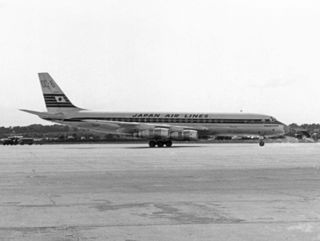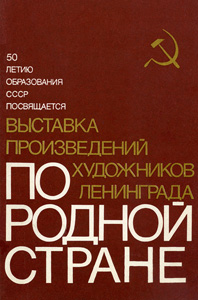 W
WThe Soviet Union's 1972 nuclear test series was a group of 24 nuclear tests conducted in 1972. These tests followed the 1971 Soviet nuclear tests series and preceded the 1973 Soviet nuclear tests series.
 W
WAeroflot Flight 217 was a non-scheduled international passenger flight from Orly Airport in Paris to Sheremetyevo International Airport in Moscow, with a stopover at Shosseynaya Airport in Leningrad. On 13 October 1972, the Ilyushin Il-62 airliner operating the flight crashed on approach to Sheremetyevo, with the loss of all 164 passengers and crew of 10. The fatalities include 118 Russians, 38 Chileans, 6 Algerians, one East German and one Australian. At the time, it was the world's deadliest aviation disaster, until it was surpassed by the Kano air disaster in 1973. As of 2021, this remains the second-deadliest accident involving an Il-62, after LOT Flight 5055, and the second-deadliest on Russian soil, after Aeroflot Flight 3352.
 W
WAeroflot Flight 558 was a scheduled Ilyushin Il-18V domestic passenger flight from Karaganda to Moscow that crashed into a field in the Abzelilovsky District on 31 August 1972 as a result of a fire stemming from exploded passenger baggage, killing all 102 people on board.
 W
WAeroflot Flight 1036 was a domestic scheduled passenger flight operated by Aeroflot that crashed during takeoff from Sochi International Airport on 1 October 1972. All 109 people aboard the Ilyushin Il-18V perished in the crash. It is the second worst accident involving an Ilyushin Il-18 and it was the worst accident involving one at the time.
 W
WAeroflot Flight 1491 was a scheduled domestic passenger flight from Moscow-Vnukovo Airport to Kharkiv Airport in the USSR that crashed on 18 May 1972 while descending to land in Kharkiv, killing all 122 passengers and crew aboard the Antonov An-10.
 W
WThe Anti-Ballistic Missile Treaty (1972—2002) was an arms control treaty between the United States and the Soviet Union on the limitation of the anti-ballistic missile (ABM) systems used in defending areas against ballistic missile-delivered nuclear weapons. Under the terms of the treaty, each party was limited to two ABM complexes, each of which was to be limited to 100 anti-ballistic missiles.
 W
WDOS-2 designation given to a space station, launched as part of the Salyut programme, which was lost in a launch failure on 29 July 1972, when the failure of the second stage of its Proton-K launch vehicle prevented the station from achieving orbit. It instead fell into the Pacific Ocean. The station, which would have been given the designation Salyut 2 had it reached orbit, was structurally identical to Salyut 1, as it had been assembled as a backup unit for that station. Four teams of cosmonauts were formed to crew the station, of which two would have flown:Alexei Leonov and Valeri Kubasov Vasily Lazarev and Oleg Makarov Aleksei Gubarev and Georgi Grechko Pyotr Klimuk and Vitaly Sevastyanov
 W
WThe Exhibition of eleven artists was opened at the end of 1972 in Leningrad on the Okhta district in the new Exhibition Hall of the Union of Artists of the Russian Federation. It became a significant important event in the Soviet fine art of the 1970s-1980s.
 W
WK-19 was the first submarine of the Project 658 class, the first generation of Soviet nuclear submarines equipped with nuclear ballistic missiles, specifically the R-13 SLBM. The boat was hastily built by the Soviets in response to United States' developments in nuclear submarines as part of the arms race. Before it was launched, 10 civilian workers and a sailor died due to accidents and fires. After it was commissioned, it had multiple breakdowns and accidents, several of which threatened to sink the submarine.
 W
WJapan Air Lines Flight 446 was a Japan Air Lines flight from Sheremetyevo International Airport of Moscow, Russian SFSR, Soviet Union to Tokyo International Airport in Ōta, Tokyo, Japan.
 W
WLuna 20 was the second of three successful Soviet lunar sample return missions. It was flown as part of the Luna program as a robotic competitor to the six successful Apollo lunar sample return missions.
 W
W"Our Contemporary" The Second Exhibition of Leningrad artists of 1972 became one of the notable event in Art of the USSR of 1972. The Exhibition took place in the State Russian Museum. Exhibition continued a series of art exhibitions of the 1970s, dedicated to image of our contemporary and opened one year before.
 W
WRoadside Picnic is a philosophical science fiction novel by Soviet-Russian authors Arkady and Boris Strugatsky, written in 1971 and published in 1972. It is the brothers' most popular and most widely translated novel outside the former Soviet Union. As of 2003, Boris Strugatsky counted 55 publications of Roadside Picnic in 22 countries.
 W
WSeventeen Moments of Spring is a 1973 Soviet twelve-part television series, directed by Tatyana Lioznova and based on the novel of the same title by Yulian Semyonov.
 W
WSofia Rotaru is the debut album by Soviet singer-songwriter Sofia Rotaru, released in July 1972 by Melodiya. The first long play album was re-released in 1974 for the Soviet and Eastern European market and re-packaged as Sofia Rotaru - 1974. The album includes songs performed in Russian, Ukrainian, Bulgarian and Romanian languages.
 W
WThais of Athens is a historical novel by Ivan Efremov written in 1972. It tells the story of the famous hetaera Thaïs, who was one of Alexander the Great's contemporaries and companions on his conquest of the oikoumene or the known world. The book combines the life of the historical and a fictional Tais.
 W
WThe Fourth Zonal Exhibition of Leningrad artists of 1972 dedicated to 50th Anniversary of USSR was opened on September 22, in the State Russian Museum as well as in Exhibition Halls of the Leningrad Union of Soviet Artists and become one of largest Art Exhibition of 1972 in the USSR.
 W
WVenera 8 was a probe in the Soviet Venera program for the exploration of Venus and was the second robotic space probe to conduct a successful landing on the surface of Venus.